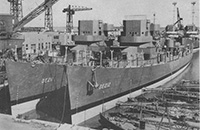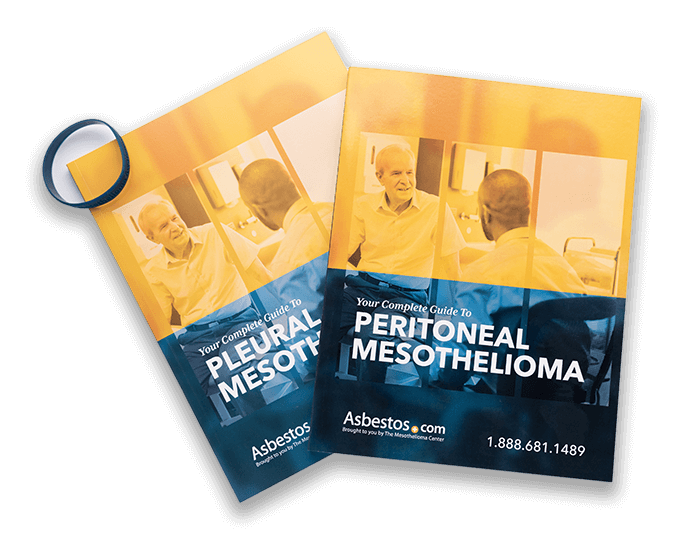Written by Aaron Munz | Edited By Walter Pacheco | Last Update: August 23, 2023
The shipyard flourished during World War I. It faced uncertainty during the great depression until the start of World War II. In 1932, the facility employed less than 250 workers. But by 1943, with World War II in full effect, the yard was employing almost 26,000 workers.
Charleston Naval Shipyard was a significant source of asbestos exposure. The yard used asbestos for its fireproofing and insulating properties. Unfortunately, exposure to asbestos can cause a number of respiratory conditions. These include lung cancer, asbestosis and mesothelioma.
By the late 1990s, residents living near the old shipyard expressed concern. A growing number of pleural cancers were diagnosed in the area. Researchers found that pleural cancers in the region were four times more than the expected incidence rate. Two-thirds were diagnosed in former Charleston Naval Shipyard workers.
In 2021, the International Journal of Environmental Health Research a review. It said sailors from Nordic countries have more than double the risk of developing mesothelioma.
In 2017, a study looked at the risk of mesothelioma among shipyard workers. Those exposed to a moderate amount of asbestos were about four times more likely to die of mesothelioma.
Charleston Naval Shipyard and Asbestos Exposure
The U.S. Navy understood asbestos was hazardous, yet used asbestos-containing materials. They used it throughout much of the 20th century. It wasn’t until 1978 that the Navy made a plan to remove asbestos from ships in 1978. The report outlined steps for safely performing asbestos abatement on ships.
After the shipyard closed in 1996, people who lived nearby were worried about what would happen to the area. They were concerned that asbestos might be released into the air. About 340 acres of the site are currently being revitalized into a sustainable urban hub for the city of North Charleston.
To make sure the air around the area was safe, the South Carolina Department of Health and Environmental Control did a study. They checked the air while the construction was happening. This aimed to keep the people in nine nearby neighborhoods safe.
Neighborhoods included in the study:
- Rosemont
- Silver Hill
- Four Mile
- Five Mile
- Union Heights
- Howard Heights
- Chicora-Cherokee
- Accabee
- Winslow
Asbestos exposure can occur in neighborhoods around shipyards, asbestos processing and manufacturing plants as well as asbestos mining operations. Limiting this exposure is crucial to protect nearby residents.

Learn about your diagnosis, top doctors and how to pay for treatment.
Get Your Free GuideCharleston Naval Shipyard Contributions
From 1901 to 1996, the Charleston Naval Shipyard gave jobs to thousands of shipyard workers and did different projects for the Navy. The yard built a total of 229 ships during World War II. After the war and when shipbuilding declined, the Navy assigned the yard to become a submarine overhaul facility.
During the Korean War, the Charleston Naval Shipyard was asked to take a break from submarines and increase its production once again. The yard activated 44 vessels and converted 27 for active duty during the war. Yet production declined once more following the Vietnam War and the yard was eventually closed on April 1, 1996.
This Page Contains 5 Cited Articles
The sources on all content featured in The Mesothelioma Center at Asbestos.com include medical and scientific studies, peer-reviewed studies and other research documents from reputable organizations.
- Lemen, R.A. and Landrigan, P.J. (2021, August). Sailors and the Risk of Asbestos-Related Cancer. Retrieved from https://www.ncbi.nlm.nih.gov/pmc/articles/PMC8394725/
- Colletta, P. and Bauer, J. United States Navy and Marine Corps Bases, Domestic. Greenwood Press: Westport, CT. 1985.
- The Post and Courier. (2010, August 15). MUSC Hospital Worker’s Letter Sparks Investigation into Odd Cluster of Illness. https://www.postandcourier.com/news/musc-hospital-workers-letter-sparks-investigation-into-odd-cluster-of-illness/article_48fa4228-8c02-5f44-b3c4-b2866cf63297.html
- U.S. Department of the Interior National Park Service. (2006, October 31). National Register of Historic Places Registration Form: Charleston Navy Yard Officers' Quarters Historic District. http://www.nationalregister.sc.gov/charleston/S10817710176/S10817710176.pdf
- Rusiecki, J. et al. (2017, March 23). Mortality among Coast Guard Shipyard workers: A retrospective cohort study of specific exposures. https://www.tandfonline.com/doi/abs/10.1080/19338244.2017.1289891








